Movie | Buried Treasure | Director | Actress | Actor | Supporting Actress |
Supporting Actor | Original Screenplay | Adapted Screenplay |
Cinematography | Production Design | Ensemble Cast | Documentary | Special
Best Movie

 The Artist – In The Artist, director Michel Hazanavicius pays tribute to the era of silent movies in a most inventive and captivating way. It is a delectable romantic comedy told through the eyes of silent super star, Jean Valentin, played to perfection by Jean Dujardin. His life, both personal and professional, is totally altered by the advent of the “talkies.” While our hero’s career spirals down, that of the buoyant, performed flawlessly by Berenice Bejo, rises. The lives of these two merge and the film tells their story. — vo
The Artist – In The Artist, director Michel Hazanavicius pays tribute to the era of silent movies in a most inventive and captivating way. It is a delectable romantic comedy told through the eyes of silent super star, Jean Valentin, played to perfection by Jean Dujardin. His life, both personal and professional, is totally altered by the advent of the “talkies.” While our hero’s career spirals down, that of the buoyant, performed flawlessly by Berenice Bejo, rises. The lives of these two merge and the film tells their story. — vo
 Another Year – In Another Year, filmmaker Mike Leigh uses the passing seasons and a middle-aged couple’s passion for gardening as metaphors to explore life’s burdens and quiet joys . Leigh employs a veteran cast we’ve seen in many of his films: Jim Broadbent and Ruth Sheen are Tom and Jerri, an engineer and psychologist who enjoy their routines with relish and seem comfortable with aging and at peace with dying. Their lonely neurotic friend Mary (Lesley Manville in a stunning performance) drinks too much, spends too much money and can’t find a decent man, while friend Ken (Peter Wight) seems determined to eat himself to an early grave. Tom and Jerri try their best to love their friends but their infectious cheerfulness often feels ingratiating, and Leigh captures this paradox with grace and authenticity, as he masterfully examines our many modes of self-sabotage and survival in this film about friendship, family and growing old. — pa
Another Year – In Another Year, filmmaker Mike Leigh uses the passing seasons and a middle-aged couple’s passion for gardening as metaphors to explore life’s burdens and quiet joys . Leigh employs a veteran cast we’ve seen in many of his films: Jim Broadbent and Ruth Sheen are Tom and Jerri, an engineer and psychologist who enjoy their routines with relish and seem comfortable with aging and at peace with dying. Their lonely neurotic friend Mary (Lesley Manville in a stunning performance) drinks too much, spends too much money and can’t find a decent man, while friend Ken (Peter Wight) seems determined to eat himself to an early grave. Tom and Jerri try their best to love their friends but their infectious cheerfulness often feels ingratiating, and Leigh captures this paradox with grace and authenticity, as he masterfully examines our many modes of self-sabotage and survival in this film about friendship, family and growing old. — pa
 Pariah – Pariah is one of those seemingly magical, little indie films that must have come together with a lot of passion and belief in the finished product from all involved. Writer/director Dee Rees constructs a powerful story of a young African-American woman living in New York City, struggling with her parents’ dissolving marriage, transition from high school to college, and the emergence of her sexuality and her first serious crush. Rees avoids a host of stereotypes and tells a moving story with both much-appreciated clarity, and knowing sensitivity. She is ably assisted by an outstanding cast, led by Adepero Oduye’s nominated lead performance as Alike. — mrc
Pariah – Pariah is one of those seemingly magical, little indie films that must have come together with a lot of passion and belief in the finished product from all involved. Writer/director Dee Rees constructs a powerful story of a young African-American woman living in New York City, struggling with her parents’ dissolving marriage, transition from high school to college, and the emergence of her sexuality and her first serious crush. Rees avoids a host of stereotypes and tells a moving story with both much-appreciated clarity, and knowing sensitivity. She is ably assisted by an outstanding cast, led by Adepero Oduye’s nominated lead performance as Alike. — mrc
 Poetry – Mija, a grandmother with heavy weight on her shoulders, uses poetry to ease her pain and to clear the difficult pathway for dealing with incipient Alzheimer’s. The film – with an appeal that is simultaneously unique and universal – balances grim reality with delicate compassion. –bk
Poetry – Mija, a grandmother with heavy weight on her shoulders, uses poetry to ease her pain and to clear the difficult pathway for dealing with incipient Alzheimer’s. The film – with an appeal that is simultaneously unique and universal – balances grim reality with delicate compassion. –bk
 Weekend – Proving that contemporary gay cinema doesn’t have to solely consist of frothy rom-coms barely good enough to air on Logo, Andrew Haigh’s intelligent, poignant film is a small wonder. Eschewing a high-concept plot, it’s simply about two guys who hook up at a bar and spend 48 hours having sex, chatting, ingesting copious substances and walking all over town, trying to make sense of their newfound connection and what comes next. With an incisive screenplay and strong performances from both Tom Cullen and Chris New, Weekend is an inspiration for exploring how ordinary people live and revealing how messy, startling and beautiful it often is when they seek and find a certain intimacy with each other. — ck
Weekend – Proving that contemporary gay cinema doesn’t have to solely consist of frothy rom-coms barely good enough to air on Logo, Andrew Haigh’s intelligent, poignant film is a small wonder. Eschewing a high-concept plot, it’s simply about two guys who hook up at a bar and spend 48 hours having sex, chatting, ingesting copious substances and walking all over town, trying to make sense of their newfound connection and what comes next. With an incisive screenplay and strong performances from both Tom Cullen and Chris New, Weekend is an inspiration for exploring how ordinary people live and revealing how messy, startling and beautiful it often is when they seek and find a certain intimacy with each other. — ck
Buried Treasure

 Trigger – The opening scene is a montage of jittery jump-cuts of the last stage performance of punk band Trigger, fronted by Vic and Kat (Tracy Wright, Molly Parker). In short order, as they share a microphone and bounce against one another in mock rock-battles, we witness a once-concordant friendship being shredded into rags. 12 years later, in a reunion that serves to open old wounds, Kat asks Vic to appear with her at a musical event celebrating “Women in Rock”. Accusations, recriminations, addictions, petty jealousies, and cheap shots reverberate through their walk down memory lane. This film features the swan song performance for perennial Chlotrudis favorite, Tracy Wright. Her interpretation of Vic burns with the black-edged fire of Patti Smith against the bittersweet smoke of Molly Parker’s Kat. — kp
Trigger – The opening scene is a montage of jittery jump-cuts of the last stage performance of punk band Trigger, fronted by Vic and Kat (Tracy Wright, Molly Parker). In short order, as they share a microphone and bounce against one another in mock rock-battles, we witness a once-concordant friendship being shredded into rags. 12 years later, in a reunion that serves to open old wounds, Kat asks Vic to appear with her at a musical event celebrating “Women in Rock”. Accusations, recriminations, addictions, petty jealousies, and cheap shots reverberate through their walk down memory lane. This film features the swan song performance for perennial Chlotrudis favorite, Tracy Wright. Her interpretation of Vic burns with the black-edged fire of Patti Smith against the bittersweet smoke of Molly Parker’s Kat. — kp
 The Arbor – Andrea Dunbar, the subject of this powerful low-budget doc, writes plays based on her life as a blue-collar, downtrodden playwright. She wrote several plays, including “The Arbor” about her life and that of her children from three different fathers. These plays are woven together to tell the tale of tragic events leading to present day, and integrated into this film. The actors in Dunbar’s plays are so real and are introduced as the the people being documented thereby bridging the gap between documentary and docudrama. This is a brilliant yet a disturbingly emotional powerhouse of a film that must not be missed. — tp
The Arbor – Andrea Dunbar, the subject of this powerful low-budget doc, writes plays based on her life as a blue-collar, downtrodden playwright. She wrote several plays, including “The Arbor” about her life and that of her children from three different fathers. These plays are woven together to tell the tale of tragic events leading to present day, and integrated into this film. The actors in Dunbar’s plays are so real and are introduced as the the people being documented thereby bridging the gap between documentary and docudrama. This is a brilliant yet a disturbingly emotional powerhouse of a film that must not be missed. — tp
 Littlerock – En route from Japan to San Francisco, two siblings in their 20s become temporarily stranded when their car breaks down in the film’s small, isolated titular town (located just outside Los Angeles). One of them, Atsuko (Atsuko Okatsuka) elects to stay behind and hang out with the community’s similarly-aged denizens, but soon discovers that the culture diverges significantly from what she’s familiar with. Mike Ott’s impressive micro-budgeted film examines how Littlerock’s residents (particularly Cory (Cory Zacharia), who’s spacey but weirdly endearing) talk incessantly but rarely comprehend each other (whether they speak the same language or not); it also explores with considerable depth what it means to be perceived as a foreigner in modern America. — ck
Littlerock – En route from Japan to San Francisco, two siblings in their 20s become temporarily stranded when their car breaks down in the film’s small, isolated titular town (located just outside Los Angeles). One of them, Atsuko (Atsuko Okatsuka) elects to stay behind and hang out with the community’s similarly-aged denizens, but soon discovers that the culture diverges significantly from what she’s familiar with. Mike Ott’s impressive micro-budgeted film examines how Littlerock’s residents (particularly Cory (Cory Zacharia), who’s spacey but weirdly endearing) talk incessantly but rarely comprehend each other (whether they speak the same language or not); it also explores with considerable depth what it means to be perceived as a foreigner in modern America. — ck
 These Amazing Shadows – This documentary addresses the purpose behind the National Film Registry. At first, I thought this would be a rehash of other documentaries that discussed the achievements of cinematic masterpieces like Citizen Kane and Gone With the Wind. But it also gets into the importance of preserving lesser-known, long-forgotten films such as the avant-garde films, the home movies and newsreels of an earlier time. Like Gone with the Wind, all of these films capture a period of time and place, serving as a reminder of what happened in the past and, in some cases, as an influence on what is going on today. — gc
These Amazing Shadows – This documentary addresses the purpose behind the National Film Registry. At first, I thought this would be a rehash of other documentaries that discussed the achievements of cinematic masterpieces like Citizen Kane and Gone With the Wind. But it also gets into the importance of preserving lesser-known, long-forgotten films such as the avant-garde films, the home movies and newsreels of an earlier time. Like Gone with the Wind, all of these films capture a period of time and place, serving as a reminder of what happened in the past and, in some cases, as an influence on what is going on today. — gc
Uncle Boonme Who Can Recall His Past Lives – In this exemplar of “contemporary contemplative cinema” by Thai director Apichatpong Weerasethakul, a man in his twilight years is visited by his dead wife and goes on a spiritual journey into the forest. In his review, Thom Bowser wrote, “With sound, imagery, and story Weerasethakul creates a world of strange importance, and he makes the extraordinary, the spiritual, and the mystical into a real fabric of sensuous reality.” Sound design and cinematography are especially fine. — djy
– In this exemplar of “contemporary contemplative cinema” by Thai director Apichatpong Weerasethakul, a man in his twilight years is visited by his dead wife and goes on a spiritual journey into the forest. In his review, Thom Bowser wrote, “With sound, imagery, and story Weerasethakul creates a world of strange importance, and he makes the extraordinary, the spiritual, and the mystical into a real fabric of sensuous reality.” Sound design and cinematography are especially fine. — djy
Best Director

 Asghar Farhadi for A Separation – Asghar Farhadi’s intricately constructed screenplay already provided much of a blueprint for how A Separation should play out on screen, but he still had to cast his film just right and direct the actors in a way which gave us the shockingly naturalistic results of the film that some might even suggest give the illusion of improvisation. Visually the film is subdued, yet stark, and the spatial relations established between each character and how they interact inform the development in their relationship dynamics and communicate the tension of their storylines in the film saliently. Though compared to Hitchcock or Kurosawa (specifically Rashoman), Farhadi doesn’t use the conventional approaches the unfurl his high-stakes story in a way that makes the audience feel as hot-headed as the characters therein, he doesn’t even take musical cues the way that most other directors would. In fact, the only music that plays in the entire film plays over the end credits, in some of the most effective uses of a musical piece all year and left the film on a note as hauntingly brilliant and provocative as the rest of it. — is
Asghar Farhadi for A Separation – Asghar Farhadi’s intricately constructed screenplay already provided much of a blueprint for how A Separation should play out on screen, but he still had to cast his film just right and direct the actors in a way which gave us the shockingly naturalistic results of the film that some might even suggest give the illusion of improvisation. Visually the film is subdued, yet stark, and the spatial relations established between each character and how they interact inform the development in their relationship dynamics and communicate the tension of their storylines in the film saliently. Though compared to Hitchcock or Kurosawa (specifically Rashoman), Farhadi doesn’t use the conventional approaches the unfurl his high-stakes story in a way that makes the audience feel as hot-headed as the characters therein, he doesn’t even take musical cues the way that most other directors would. In fact, the only music that plays in the entire film plays over the end credits, in some of the most effective uses of a musical piece all year and left the film on a note as hauntingly brilliant and provocative as the rest of it. — is
 Sean Durkin for Martha Marcy May Marlene – First time director Sean Durkin displays incipient talent in bringing his own screenplay to life. A young woman escapes a cult, but with a damaged psyche, and at her sister’s vacation home has trouble separating past and present. Especially admirable is the smoothness with which Durkin moves between the two threads of the story, subtly distinguishing between now and then, and using visual connectors that seem uncanny to the viewer rather than trite. Durkin’s has elicited an outstanding performance from star Elizabeth Olsen, and delivers a slow burn in this tense, engaging, and creepy film. — djy
Sean Durkin for Martha Marcy May Marlene – First time director Sean Durkin displays incipient talent in bringing his own screenplay to life. A young woman escapes a cult, but with a damaged psyche, and at her sister’s vacation home has trouble separating past and present. Especially admirable is the smoothness with which Durkin moves between the two threads of the story, subtly distinguishing between now and then, and using visual connectors that seem uncanny to the viewer rather than trite. Durkin’s has elicited an outstanding performance from star Elizabeth Olsen, and delivers a slow burn in this tense, engaging, and creepy film. — djy
 Michel Hazanavicius for The Artist – The creator of arguably the most joyful of films this year, Michel Hazanavicius piles into The Artist all of his love, affection and knowledge of film technique and trickery to create an irresistible confection with heart. Collaborating with star Jean Dujardin for the third time, it’s clear that their previous OSS James Bond spoofs were testing grounds for Hazanavicius to find the line between homage and parody. In The Artist he mines this sweet spot to its height, usually by juxtaposing old fashioned framing with modern story or cinematic elements. What’s a wonderful surprise, though, is that often that newer elements are themselves period pieces, familiar to film buffs – the film winds up being both a light melodramatic comedy and a film history survey course. — bcu
Michel Hazanavicius for The Artist – The creator of arguably the most joyful of films this year, Michel Hazanavicius piles into The Artist all of his love, affection and knowledge of film technique and trickery to create an irresistible confection with heart. Collaborating with star Jean Dujardin for the third time, it’s clear that their previous OSS James Bond spoofs were testing grounds for Hazanavicius to find the line between homage and parody. In The Artist he mines this sweet spot to its height, usually by juxtaposing old fashioned framing with modern story or cinematic elements. What’s a wonderful surprise, though, is that often that newer elements are themselves period pieces, familiar to film buffs – the film winds up being both a light melodramatic comedy and a film history survey course. — bcu
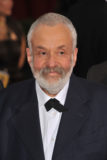 Mike Leigh for Another Year – Mike Leigh’s celebrated style of direction — building the storyline and characters with his actors through months of improvisational rehearsal prior to filming – has once again delivered a masterpiece of natural performances from his ensemble cast. Leigh’s “kitchen sink realism” pulls no punches; none of the principals is without flaws, but each character arc is credible and consistent, and the audience walks away sympathetic to all, while wondering what the next year might bring. — kp
Mike Leigh for Another Year – Mike Leigh’s celebrated style of direction — building the storyline and characters with his actors through months of improvisational rehearsal prior to filming – has once again delivered a masterpiece of natural performances from his ensemble cast. Leigh’s “kitchen sink realism” pulls no punches; none of the principals is without flaws, but each character arc is credible and consistent, and the audience walks away sympathetic to all, while wondering what the next year might bring. — kp
 Takashi Miike for 13 Assassins – When it comes to the works of director Takeshi Miike, one phrase always comes to mind – Oh My (insert deity of your choice here). Whether that’s being said in awe at his audications directing style, or in shock at the various and…innovative ways he uses the red stuff, your mileage may vary. After all, who else would have come up with using flaming cows as a weapon – every vegans nightmare (heh heh). He is always both subtle and bold in his approach to various shots, and it shows here as in his past films. — kb
Takashi Miike for 13 Assassins – When it comes to the works of director Takeshi Miike, one phrase always comes to mind – Oh My (insert deity of your choice here). Whether that’s being said in awe at his audications directing style, or in shock at the various and…innovative ways he uses the red stuff, your mileage may vary. After all, who else would have come up with using flaming cows as a weapon – every vegans nightmare (heh heh). He is always both subtle and bold in his approach to various shots, and it shows here as in his past films. — kb
 Lars von Trier for Melancholia – Lars Von Trier creates a unique mood in Melancholia. Himself a victim of severe depression, Von Trier presents internal emotional struggles in the context of planetary annihilation. Melancholia has a dreamlike quality that straddles the line between sublime fantasy and irreversible nightmare. Von Trier is an original. –bk
Lars von Trier for Melancholia – Lars Von Trier creates a unique mood in Melancholia. Himself a victim of severe depression, Von Trier presents internal emotional struggles in the context of planetary annihilation. Melancholia has a dreamlike quality that straddles the line between sublime fantasy and irreversible nightmare. Von Trier is an original. –bk
Best Actress

 Tracy Wright for the role of Vic in Trigger – Trigger is a gift to us from Tracy Wright, Bruce McDonald, and all involved. With so few leading roles in her film career, to end on such a high note is glorious. Tracy Wright’s Vic is glorious in her complexity. Recovering addict; nostalgic punk goddess; introspective songwriter; aging woman frightened about her health; all facets hidden by a wry sarcasm, a flip “fuck you,” and a dismissive shrug. Yet as Vic and her former, equally fucked-up bandmate Cat (Molly Parker), spend an night together ten years after the shattering break-up of their band – and their volatile friendship – Wright allows moments of fragility, retrospection, and honesty slip free under the dover of darkness. Tracy captures the soul of a broken artist on the mend with all the considerable talent at her command, but when she and Molly Parker stroll down the night-time Toronto streets, it’s pure punk attitude. A tour-de-force performance. Thank you, Tracy. — mrc
Tracy Wright for the role of Vic in Trigger – Trigger is a gift to us from Tracy Wright, Bruce McDonald, and all involved. With so few leading roles in her film career, to end on such a high note is glorious. Tracy Wright’s Vic is glorious in her complexity. Recovering addict; nostalgic punk goddess; introspective songwriter; aging woman frightened about her health; all facets hidden by a wry sarcasm, a flip “fuck you,” and a dismissive shrug. Yet as Vic and her former, equally fucked-up bandmate Cat (Molly Parker), spend an night together ten years after the shattering break-up of their band – and their volatile friendship – Wright allows moments of fragility, retrospection, and honesty slip free under the dover of darkness. Tracy captures the soul of a broken artist on the mend with all the considerable talent at her command, but when she and Molly Parker stroll down the night-time Toronto streets, it’s pure punk attitude. A tour-de-force performance. Thank you, Tracy. — mrc
 Bérénice Bejo for the role of Peppy Miller in The Artist – By recognizingThe Artist as one of the year’s top films, we must take note that one of the filmmakers’ most noteworthy accomplishments was to re-create a movie-going experience for an audience that had only experienced films where the characters spoke to one another. In pulling off this feat, director Michel Hazanavicius needed the skills of a talented group of actors and, fortunately for him, one of those actresses was his wife, Berenice Bejo. In the role of Peppy Miller, the unknown actress who becomes a Hollywood star as the movie progresses, Bejo must charm the audience without the use of her voice and this is where you see Bejo’s skills as an actress shine. Whether she is dancing across the screen with co-star Jean Dujardin or using a hanging coat jacket as a means to display her attraction to leading man George Valentin, Bejo delights the audience and is a big reason for why The Artist works as a film. — gc
Bérénice Bejo for the role of Peppy Miller in The Artist – By recognizingThe Artist as one of the year’s top films, we must take note that one of the filmmakers’ most noteworthy accomplishments was to re-create a movie-going experience for an audience that had only experienced films where the characters spoke to one another. In pulling off this feat, director Michel Hazanavicius needed the skills of a talented group of actors and, fortunately for him, one of those actresses was his wife, Berenice Bejo. In the role of Peppy Miller, the unknown actress who becomes a Hollywood star as the movie progresses, Bejo must charm the audience without the use of her voice and this is where you see Bejo’s skills as an actress shine. Whether she is dancing across the screen with co-star Jean Dujardin or using a hanging coat jacket as a means to display her attraction to leading man George Valentin, Bejo delights the audience and is a big reason for why The Artist works as a film. — gc
 Kirsten Dunst for the role of Justine in Melanchlia – It is no mean feat to play a character who is clinically depressed in the best of situations. Add to that an apocalyptic tale by Lars von Trier, and the task becomes nearly Herculean. Kirsten Dunst rises beautifully to the occasion, avoiding a mopey, “look at me, I’m so depressed” portrayal and instead gives us something so much more nuanced. In the first half of Melancholia, which takes place during Justine’s wedding, Dunst pinwheels from giddy excitement, to fatigue-induced paralysis while trying desperately to please both herself and those around her. In the latter half, as the end of the world draws near, Justine’s fatalism is shown as alternatively crippling and liberating in a performance that is worthy of critical notice and perhaps, a Chlotrudis Award. — mrc
Kirsten Dunst for the role of Justine in Melanchlia – It is no mean feat to play a character who is clinically depressed in the best of situations. Add to that an apocalyptic tale by Lars von Trier, and the task becomes nearly Herculean. Kirsten Dunst rises beautifully to the occasion, avoiding a mopey, “look at me, I’m so depressed” portrayal and instead gives us something so much more nuanced. In the first half of Melancholia, which takes place during Justine’s wedding, Dunst pinwheels from giddy excitement, to fatigue-induced paralysis while trying desperately to please both herself and those around her. In the latter half, as the end of the world draws near, Justine’s fatalism is shown as alternatively crippling and liberating in a performance that is worthy of critical notice and perhaps, a Chlotrudis Award. — mrc
 Adepero Oduye for the role of Alike in Pariah – As Alike, a teenaged, African-American girl in Brooklyn discovering her homosexuality and struggling to come out to her family, Adepero Oduye is a natural. You never question whether the actress herself is gay or a New Yorker because her Alike seems so real and unaffected. Oduye has the perfect, androgynous appearance that sets her character apart from hundreds of other onscreen adolescent protagonists, but she also fully illustrates the complexities and rollercoaster of emotions that every any teenager experiences, thus rendering her distinctive yet relatable. Throughout Pariah, her joy and heartbreak become our own as we witness both a young woman and a gifted young actress come of age. — ck
Adepero Oduye for the role of Alike in Pariah – As Alike, a teenaged, African-American girl in Brooklyn discovering her homosexuality and struggling to come out to her family, Adepero Oduye is a natural. You never question whether the actress herself is gay or a New Yorker because her Alike seems so real and unaffected. Oduye has the perfect, androgynous appearance that sets her character apart from hundreds of other onscreen adolescent protagonists, but she also fully illustrates the complexities and rollercoaster of emotions that every any teenager experiences, thus rendering her distinctive yet relatable. Throughout Pariah, her joy and heartbreak become our own as we witness both a young woman and a gifted young actress come of age. — ck
 Elizabeth Olsen for the role of Martha in Martha Marcy May Marlene – Concerning a young woman struggling with the aftermath of her time at a cult, explores the perceptions of a damaged psyche and the ways our everyday life could be viewed as not all that dissimilar to your average cult. The film follows two parallel tracks, Martha’s life as Marcy May living with a cult, and the return to her life as Martha, freshly escaped from said cult and living with her sister Lucy and Lucy’s new husband, Tim. The younger sibling of the more famous Olsen twins, newcomer Elizabeth Olsen is a marvel portraying a complex, damaged young woman, with a tendency toward turning inward and conveying her multi-leveled emotions by facial expression and body language alone. — mrc
Elizabeth Olsen for the role of Martha in Martha Marcy May Marlene – Concerning a young woman struggling with the aftermath of her time at a cult, explores the perceptions of a damaged psyche and the ways our everyday life could be viewed as not all that dissimilar to your average cult. The film follows two parallel tracks, Martha’s life as Marcy May living with a cult, and the return to her life as Martha, freshly escaped from said cult and living with her sister Lucy and Lucy’s new husband, Tim. The younger sibling of the more famous Olsen twins, newcomer Elizabeth Olsen is a marvel portraying a complex, damaged young woman, with a tendency toward turning inward and conveying her multi-leveled emotions by facial expression and body language alone. — mrc
 Jeong-hie Yun for the role of Mija in Poetry – Poetry follows a woman through a number of unexpected existential crises which have descended upon her all at once. At the same time, she is immersing herself in the pursuit of a simple personal desire – to write a poem. She struggles through all these crises, barely able to endure the madness around her, and she struggles to write that poem. Despite her frustration at this supposed failure, Mija is often found enraptured by others’ poetry. You can see this woman’s entire soul sink into each spoken word, watching her bring the beauty deep into her heart where she can enjoy it fully. This is the real mastery of Yun’s performance. We are able to see through her longing expressions how meaningful this art form is to her, how it brings her comfort during these trying times in her life. Yun’s acting is so flawless, she allows the audience to join her as she – through poetry – finds a way to enjoy the beauty of life, even as this experience is starkly contrasted with the realities of her own situation. Such a marvelous actress, Yun is no less than poetry herself. — bca
Jeong-hie Yun for the role of Mija in Poetry – Poetry follows a woman through a number of unexpected existential crises which have descended upon her all at once. At the same time, she is immersing herself in the pursuit of a simple personal desire – to write a poem. She struggles through all these crises, barely able to endure the madness around her, and she struggles to write that poem. Despite her frustration at this supposed failure, Mija is often found enraptured by others’ poetry. You can see this woman’s entire soul sink into each spoken word, watching her bring the beauty deep into her heart where she can enjoy it fully. This is the real mastery of Yun’s performance. We are able to see through her longing expressions how meaningful this art form is to her, how it brings her comfort during these trying times in her life. Yun’s acting is so flawless, she allows the audience to join her as she – through poetry – finds a way to enjoy the beauty of life, even as this experience is starkly contrasted with the realities of her own situation. Such a marvelous actress, Yun is no less than poetry herself. — bca
Best Actor

 Michael Shannon for the role of Curtis in Take Shelter – Michael Shannon plays a mine equipment operator suddenly visited by apocalyptic nightmares. The taciturn, responsible brother, husband, and father fears he’s losing his sanity. Even as Curtis starts to lose the battle against his dread and inner turmoil, Shannon somehow makes this character into an Everyman. — djy
Michael Shannon for the role of Curtis in Take Shelter – Michael Shannon plays a mine equipment operator suddenly visited by apocalyptic nightmares. The taciturn, responsible brother, husband, and father fears he’s losing his sanity. Even as Curtis starts to lose the battle against his dread and inner turmoil, Shannon somehow makes this character into an Everyman. — djy
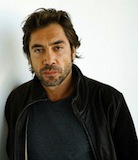 Javier Bardem for the role of Uxbal in Biutiful – Javier Bardem is known for roles that portray fire and passion. As Uxbal, a dying man determined to help the downtrodden around him, Bardem inhabits the character with a depth of emotion and complexity that often gets lost amid the film’s merciless portrayal of poverty, crime and cruelty. Uxbal lives amid despair, trying to right the wrongs perpetrated by those who exploit the urban poor, but he sees beauty in brief moments: the color of the sky at dusk, the face of his daughter while she does her homework. Bardem’s wrenching performance is all the more powerful for avoiding intense theatrics; his pain and frustration are etched in his face, his stooped shoulders, his tired gait. — pa
Javier Bardem for the role of Uxbal in Biutiful – Javier Bardem is known for roles that portray fire and passion. As Uxbal, a dying man determined to help the downtrodden around him, Bardem inhabits the character with a depth of emotion and complexity that often gets lost amid the film’s merciless portrayal of poverty, crime and cruelty. Uxbal lives amid despair, trying to right the wrongs perpetrated by those who exploit the urban poor, but he sees beauty in brief moments: the color of the sky at dusk, the face of his daughter while she does her homework. Bardem’s wrenching performance is all the more powerful for avoiding intense theatrics; his pain and frustration are etched in his face, his stooped shoulders, his tired gait. — pa
 Tom Cullen for the role of Russell in Weekend – As Russell, a gay man who primarily navigates his life among family and straight friends, Tom Cullen does a marvelous job of displaying his vulnerability and secret desire for intimacy when he picks up a more experienced gay man for a one-night stand. –bk
Tom Cullen for the role of Russell in Weekend – As Russell, a gay man who primarily navigates his life among family and straight friends, Tom Cullen does a marvelous job of displaying his vulnerability and secret desire for intimacy when he picks up a more experienced gay man for a one-night stand. –bk
 Jean Dujardin for the role of George Valentin in The Artist – Rarely has an actor been so perfectly cast for a role. Part Douglas Fairbanks, Jr., part Gene Kelly, Dujardin displays the bravura of a silent screen star, the charm of a matinee idol, the sensitivity of a true artist, and the pathos of a man for whom time is passing by. — bk
Jean Dujardin for the role of George Valentin in The Artist – Rarely has an actor been so perfectly cast for a role. Part Douglas Fairbanks, Jr., part Gene Kelly, Dujardin displays the bravura of a silent screen star, the charm of a matinee idol, the sensitivity of a true artist, and the pathos of a man for whom time is passing by. — bk
 Chris New for the role of Glen in Weekend – Chris New plays Glen, the raffish and extroverted half of Weekend’s hook-up-that-becomes-much-more. Although Glen is scornful of romance, underneath he has a vulnerability and uncertainty that comes from a brokenhearted past. New, a stage actor until WEEKEND, readily adapts to the intimacy of film. Playing the role with a relaxed authenticity, he delivers more emotional impact than he even intended. — djy
Chris New for the role of Glen in Weekend – Chris New plays Glen, the raffish and extroverted half of Weekend’s hook-up-that-becomes-much-more. Although Glen is scornful of romance, underneath he has a vulnerability and uncertainty that comes from a brokenhearted past. New, a stage actor until WEEKEND, readily adapts to the intimacy of film. Playing the role with a relaxed authenticity, he delivers more emotional impact than he even intended. — djy
 Stellan Skarsgård for the role of Ulrik in A Somewhat Gentle Man – Skarsgård has long been a highly sought-after artist in his native Sweden. In the film, A Somewhat Gentle Man, Skarsgård plays Ulrik, a character who has recently been released from prison. The beauty of Skarsgård’s role in this film is that we can’t be certain of his motives: does he want to build a new life for himself or remain rooted in his past? Skarsgård allows his character’s intentions to unfold gradually, and the audience must be patient while his transformation is revealed. He is able to restrain the kinds of expressions that might betray the film’s true intentions, and in so doing, his calm, understated character, a man of very few words, can be fully known and understood by the audience. Ulrik must convey two opposing tendencies within his psyche. He is both strong and fiercely capable of exacting revenge, yet he is capable of true compassion. It is because of Skarsgård’s skill that we can be intimately drawn into the heart and mind of Ulrik His seamless performance in A Somewhat Gentle Man undeniably deserves this nomination for best actor. — bca
Stellan Skarsgård for the role of Ulrik in A Somewhat Gentle Man – Skarsgård has long been a highly sought-after artist in his native Sweden. In the film, A Somewhat Gentle Man, Skarsgård plays Ulrik, a character who has recently been released from prison. The beauty of Skarsgård’s role in this film is that we can’t be certain of his motives: does he want to build a new life for himself or remain rooted in his past? Skarsgård allows his character’s intentions to unfold gradually, and the audience must be patient while his transformation is revealed. He is able to restrain the kinds of expressions that might betray the film’s true intentions, and in so doing, his calm, understated character, a man of very few words, can be fully known and understood by the audience. Ulrik must convey two opposing tendencies within his psyche. He is both strong and fiercely capable of exacting revenge, yet he is capable of true compassion. It is because of Skarsgård’s skill that we can be intimately drawn into the heart and mind of Ulrik His seamless performance in A Somewhat Gentle Man undeniably deserves this nomination for best actor. — bca
Best Supporting Actress

 Lesley Manville for the role of Mary in Another Year – Lesley plays the role of Mary as both feisty and as a lonely woman that is a close friend to the main couple. She humanely captures her lean on them along with her own daily struggles, failures, and glimpses of hope. The audience is both irritated and empathetic in the character portrayal and you laugh and cry at her discoveries over the time frame of a year, in humor and bitterness. Her best supporting actor performance is one that screams to be the center of attention and cries when it is ignored. In the audience, it is as if we are looking at that side of us in the character of Mary in the mirror and putting it into the rest of the picture of someone in post midlife crisis. She perfectly captures that lost sense of beauty, sex appeal, and place in the world, yet still has hope for something to happen in the time she has left. — tp
Lesley Manville for the role of Mary in Another Year – Lesley plays the role of Mary as both feisty and as a lonely woman that is a close friend to the main couple. She humanely captures her lean on them along with her own daily struggles, failures, and glimpses of hope. The audience is both irritated and empathetic in the character portrayal and you laugh and cry at her discoveries over the time frame of a year, in humor and bitterness. Her best supporting actor performance is one that screams to be the center of attention and cries when it is ignored. In the audience, it is as if we are looking at that side of us in the character of Mary in the mirror and putting it into the rest of the picture of someone in post midlife crisis. She perfectly captures that lost sense of beauty, sex appeal, and place in the world, yet still has hope for something to happen in the time she has left. — tp
 Frances Fisher for the role of Lily in Janie Jones – In a brief but pivotal scene, Frances Fisher provides the missing piece of the puzzle to the character of her estranged son, a rock and roll musician in the midst of a career meltdown and a surprising personal dilemma. Her icy exterior begins to thaw when she discovers her unknown granddaughter, Janie Jones. — sb
Frances Fisher for the role of Lily in Janie Jones – In a brief but pivotal scene, Frances Fisher provides the missing piece of the puzzle to the character of her estranged son, a rock and roll musician in the midst of a career meltdown and a surprising personal dilemma. Her icy exterior begins to thaw when she discovers her unknown granddaughter, Janie Jones. — sb
 Melissa Leo for the role of Sara in Red State – Call me a flatterer, but Melissa Leo seems way way WAY too young to play the daughter of Michael Parks. But then again, it’s the kind of challenge that brings the best out of all her performances. As a devout member of a family church specializing in executing gays and horny teenagers, Leo, as always, is spot on with her character, able to play both slutty to lure people in, and pious when it’s time for the sacrifices that she and her family make. Throw in the fact that she’s more than a little crazy (at least I thought so) and as always, Leo makes every part of her character totally real. And that’s the best compliment you can give an actress. She’s simply one of the best at her craft. — tck
Melissa Leo for the role of Sara in Red State – Call me a flatterer, but Melissa Leo seems way way WAY too young to play the daughter of Michael Parks. But then again, it’s the kind of challenge that brings the best out of all her performances. As a devout member of a family church specializing in executing gays and horny teenagers, Leo, as always, is spot on with her character, able to play both slutty to lure people in, and pious when it’s time for the sacrifices that she and her family make. Throw in the fact that she’s more than a little crazy (at least I thought so) and as always, Leo makes every part of her character totally real. And that’s the best compliment you can give an actress. She’s simply one of the best at her craft. — tck
 Kristin Scott Thomas for the role of Christine in Love Crime – In this, his last film, Alain Corneau creates a taut psychological thriller with Kristin Scott Thomas and Ludivine Sagnier squaring off. Thomas plays Christine, a cold conniving high powered office executive to Sagnier’s seemingly innocent and supportive office assistant, Isabelle. When Christine claims that one of Isabelle’s ideas is hers, Isabelle gloves come off and the battle begins. The plot often seems to be heading in one direction, but takes a turn that might not be pulled off were it not for the performances of the two actresses. — vo
Kristin Scott Thomas for the role of Christine in Love Crime – In this, his last film, Alain Corneau creates a taut psychological thriller with Kristin Scott Thomas and Ludivine Sagnier squaring off. Thomas plays Christine, a cold conniving high powered office executive to Sagnier’s seemingly innocent and supportive office assistant, Isabelle. When Christine claims that one of Isabelle’s ideas is hers, Isabelle gloves come off and the battle begins. The plot often seems to be heading in one direction, but takes a turn that might not be pulled off were it not for the performances of the two actresses. — vo
 Kim Wayans for the role of Audrey in Pariah – Better known as the sister in the Wayans comedy clan, Kim Wayans makes a stand as a dramatic actress in her portrayal of Audrey, a mother obsessed with, and captive to, the unattainable dream of a perfect ‘normal’ life. You can see the stress of walking that impossibly thin line in her face. No matter what she is saying or doing, however cruel, kind or verging on hysteria, her eyes reflect the trapped animal that can’t help walking into the same traps, over and over. Her eldest daughter’s emerging identity becomes the flashpoint for all of the pent up frustration Wayans makes clear has been with her character a long time. It’s a role that could have been Cruella de Ville one-note, but Wayans reveals more tragic depths as she makes clear the character’s intelligence and awful self-awareness. Audrey is her own worst enemy, she knows it, but still can’t stop from hurting herself, her daughter, and her family. — bcu
Kim Wayans for the role of Audrey in Pariah – Better known as the sister in the Wayans comedy clan, Kim Wayans makes a stand as a dramatic actress in her portrayal of Audrey, a mother obsessed with, and captive to, the unattainable dream of a perfect ‘normal’ life. You can see the stress of walking that impossibly thin line in her face. No matter what she is saying or doing, however cruel, kind or verging on hysteria, her eyes reflect the trapped animal that can’t help walking into the same traps, over and over. Her eldest daughter’s emerging identity becomes the flashpoint for all of the pent up frustration Wayans makes clear has been with her character a long time. It’s a role that could have been Cruella de Ville one-note, but Wayans reveals more tragic depths as she makes clear the character’s intelligence and awful self-awareness. Audrey is her own worst enemy, she knows it, but still can’t stop from hurting herself, her daughter, and her family. — bcu
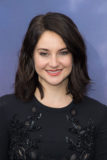 Shailene Woodley for the role of Alexandra King in The Descendants – Though young (20), Miss Woodley displays remarkable poise and range of emotion as an actress. As Alex, the wisecracking teenager who morphs into a wise-beyond-her-years helpmeet to her grieving father, she is always believable, transcending a script that occasionally stretches the limits of emotional and narrative credibility. Certainly with her smoky girl next door looks and solid chops, she is a young performer to watch. — pa
Shailene Woodley for the role of Alexandra King in The Descendants – Though young (20), Miss Woodley displays remarkable poise and range of emotion as an actress. As Alex, the wisecracking teenager who morphs into a wise-beyond-her-years helpmeet to her grieving father, she is always believable, transcending a script that occasionally stretches the limits of emotional and narrative credibility. Certainly with her smoky girl next door looks and solid chops, she is a young performer to watch. — pa
Best Supporting Actor

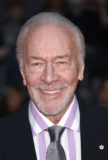 Christopher Plummer for the role of Hal Fields in Beginners – Picture Christopher Plummer as Hal who at the ripe old age of 75 confesses that he is gay (adding that he always has been) to his son, Olivier, played by Ewan McGregor. Actually, the telling is the liberation for both father and son, though in different ways. It allows Hal to live the life he has always wanted and embrace it he does, becoming involved with a much younger boyfriend and then cancer strikes him. His father’s revelation forces Oliver, who has recently become involved with Anna, to face his own fear of commitment and of keeping his emotions hidden. What makes the film so poignant and effective is the interaction and beautifully nuanced performances of both Plummer and McGregor. — vo
Christopher Plummer for the role of Hal Fields in Beginners – Picture Christopher Plummer as Hal who at the ripe old age of 75 confesses that he is gay (adding that he always has been) to his son, Olivier, played by Ewan McGregor. Actually, the telling is the liberation for both father and son, though in different ways. It allows Hal to live the life he has always wanted and embrace it he does, becoming involved with a much younger boyfriend and then cancer strikes him. His father’s revelation forces Oliver, who has recently become involved with Anna, to face his own fear of commitment and of keeping his emotions hidden. What makes the film so poignant and effective is the interaction and beautifully nuanced performances of both Plummer and McGregor. — vo
 Jean Pierre Darroussin for the role of Monet in Le Havre – Very few actors can play a role in deadpan fashion and simultaneously add nuance to the character. Jean-Pierre Darroussin does just that in the role of police inspector trying to track down an African boy who is an illegal immigrant. His adversaries are all members of his community who he knows, possibly has loved and certainly respects. — bk
Jean Pierre Darroussin for the role of Monet in Le Havre – Very few actors can play a role in deadpan fashion and simultaneously add nuance to the character. Jean-Pierre Darroussin does just that in the role of police inspector trying to track down an African boy who is an illegal immigrant. His adversaries are all members of his community who he knows, possibly has loved and certainly respects. — bk
 John Hawkes for the role of Patrick in Martha Marcy May Marlene – It’s hard to pick a “best” role for Mr. Hawkes in a year like 2011, since he was in so many fine films (including a memorable turn in Higher Ground). But something about his portrayal of the charismatic, cold-blooded leader of a cultish commune is deeply haunting, just like the film itself. Hawkes is perfect in this complex role, gentle and charming when he needs to be, brutish and calculating in the light of day. — pa
John Hawkes for the role of Patrick in Martha Marcy May Marlene – It’s hard to pick a “best” role for Mr. Hawkes in a year like 2011, since he was in so many fine films (including a memorable turn in Higher Ground). But something about his portrayal of the charismatic, cold-blooded leader of a cultish commune is deeply haunting, just like the film itself. Hawkes is perfect in this complex role, gentle and charming when he needs to be, brutish and calculating in the light of day. — pa
 Shahab Hosseini for the role of Hodjat in A Separation – In his second film with director Asghar Farhadi, Shahab Hosseini shines as the husband of a domestic employee who, after losing his job and being hounded by creditors, suddenly snaps when his wife miscarries. His irrational rage is the driving force of the film. — sb
Shahab Hosseini for the role of Hodjat in A Separation – In his second film with director Asghar Farhadi, Shahab Hosseini shines as the husband of a domestic employee who, after losing his job and being hounded by creditors, suddenly snaps when his wife miscarries. His irrational rage is the driving force of the film. — sb
 John C. Reilly for the role of Mr. Fitzgerald in Terri – John C. Reilly gives another standout performance as Mr. Fitzgerald, an assistant principal dealing in an unusual fashion with an outsider student, in this quirky, dark comedy-drama. Terri, the title character, is 15 years old, obese, lonely, and mostly invisible, other than as a target for bullies, source of amusement to the student body for his sartorial style (he wears his pajamas to class), and source of irritation to his teachers for perennial tardiness. Mr. Fitzgerald, a self-admitted social misfit, offers odd advice and bizarre anecdotes in his attempt to connect with Terri and help him to survive the tortures of high school; his empathy for Terri’s situation comes across as genuine, though unconventional in its application. Reilly creates a tender-hearted enfant terrible, in conversational blurts of “too much information”, punctuated by out-dated urban slang and some comically abrupt switches in his one–man-show of good cop/bad cop authority figure for the “monsters” he hopes to rehabilitate. — kp
John C. Reilly for the role of Mr. Fitzgerald in Terri – John C. Reilly gives another standout performance as Mr. Fitzgerald, an assistant principal dealing in an unusual fashion with an outsider student, in this quirky, dark comedy-drama. Terri, the title character, is 15 years old, obese, lonely, and mostly invisible, other than as a target for bullies, source of amusement to the student body for his sartorial style (he wears his pajamas to class), and source of irritation to his teachers for perennial tardiness. Mr. Fitzgerald, a self-admitted social misfit, offers odd advice and bizarre anecdotes in his attempt to connect with Terri and help him to survive the tortures of high school; his empathy for Terri’s situation comes across as genuine, though unconventional in its application. Reilly creates a tender-hearted enfant terrible, in conversational blurts of “too much information”, punctuated by out-dated urban slang and some comically abrupt switches in his one–man-show of good cop/bad cop authority figure for the “monsters” he hopes to rehabilitate. — kp
Best Original Screenplay
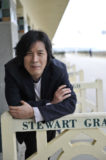
 Poetry, screenplay by Chang-dong Lee – Murder, Alzheimer’s and poetry seem unlikely ingredients for a compelling story; however writer/director Chang-dong Lee has created a unique, suspenseful and heart-rendering screenplay based on these disparate themes. — bk
Poetry, screenplay by Chang-dong Lee – Murder, Alzheimer’s and poetry seem unlikely ingredients for a compelling story; however writer/director Chang-dong Lee has created a unique, suspenseful and heart-rendering screenplay based on these disparate themes. — bk
 Another Year, screenplay by Mike Leigh– Mike Leigh knows how to create characters with unusual depth. He is equally facile with his dialogue, which propels the narrative forward on par with his plot devices. Another Year focuses on contrasting lives and the character traits that mold them. Leigh contends that profound happiness and excruciating misery are not outcomes of serendipity. — bk
Another Year, screenplay by Mike Leigh– Mike Leigh knows how to create characters with unusual depth. He is equally facile with his dialogue, which propels the narrative forward on par with his plot devices. Another Year focuses on contrasting lives and the character traits that mold them. Leigh contends that profound happiness and excruciating misery are not outcomes of serendipity. — bk
 The Guard, screenplay by John Michael McDonagh – People always ask me, what did you think about the screenplay for The Guard? And i tell them, as unpretentiously as i can, that the screenplay for The Guard deftly and slyly attacks and accommodates the fish-out-of-water culture clash buddy shoot-em-up picture all at once and gently. From the opening moments the film tells you that you will see something both entirely predictable and utterly unexpected at the same time. And it delivers, though i’m still planning on checking those olympic records. — tb
The Guard, screenplay by John Michael McDonagh – People always ask me, what did you think about the screenplay for The Guard? And i tell them, as unpretentiously as i can, that the screenplay for The Guard deftly and slyly attacks and accommodates the fish-out-of-water culture clash buddy shoot-em-up picture all at once and gently. From the opening moments the film tells you that you will see something both entirely predictable and utterly unexpected at the same time. And it delivers, though i’m still planning on checking those olympic records. — tb
 Martha Marcy May Marlene, screenplay by Sean Durkin – Martha Marcy May Marlene examines the long-ranging psychological ramifications following a young girl’s involvement and subsequent escape from a cult, without ever muttering the word “cult” itself. The consequences the film examines are endless, from her troubled relationship with her sister (and her sister’s fiancé) who are unaware of her personal history to her own fears for her safety that make her keep repressing those unfortunate memories and even some legacies from the cult’s brainwashing philosophies that she still believes in and trusts in her heart. As the narrative cuts back and forth between Martha’s present with her remaining family trying to personally recuperate with her past experiences in the cult, each flashback — and all accompanying information revealed — slowly plunges the audience further into the dark world of her paranoia and fear that the film’s pervasive ending suggests may never stop following her. — is
Martha Marcy May Marlene, screenplay by Sean Durkin – Martha Marcy May Marlene examines the long-ranging psychological ramifications following a young girl’s involvement and subsequent escape from a cult, without ever muttering the word “cult” itself. The consequences the film examines are endless, from her troubled relationship with her sister (and her sister’s fiancé) who are unaware of her personal history to her own fears for her safety that make her keep repressing those unfortunate memories and even some legacies from the cult’s brainwashing philosophies that she still believes in and trusts in her heart. As the narrative cuts back and forth between Martha’s present with her remaining family trying to personally recuperate with her past experiences in the cult, each flashback — and all accompanying information revealed — slowly plunges the audience further into the dark world of her paranoia and fear that the film’s pervasive ending suggests may never stop following her. — is
 Weekend, screenplay by Andrew Haigh – Andrew Haigh’s delicate story in Weekend plays out quietly in tenderly realized moments and hushed whispers. Speaking self-referentially to his own art through his characters who don’t think anyone but gay audiences will show up to their gay-themed art project just to see some sex, and to the very conventions of the romance genre that he continually spins on its head (“is this our Notting Hill moment?”), Haigh is well aware of the familiar setup and clichés of gay and romantic films and sets out to subvert expectations and spin them on their heads. But more than anything else in this script, the relationship at hand is central. Tales of both characters pasts are sewn in carefully, and build on enough development for an audience to glue their interests and attention to these two men leading queer lives in a British industrial town. Anyone can relate to falling in love with the wrong person at the wrong time, and though you want to continue on with the characters throughout the film, Haigh’s poignant ending hits you with this fact like a punch to the gut. — is
Weekend, screenplay by Andrew Haigh – Andrew Haigh’s delicate story in Weekend plays out quietly in tenderly realized moments and hushed whispers. Speaking self-referentially to his own art through his characters who don’t think anyone but gay audiences will show up to their gay-themed art project just to see some sex, and to the very conventions of the romance genre that he continually spins on its head (“is this our Notting Hill moment?”), Haigh is well aware of the familiar setup and clichés of gay and romantic films and sets out to subvert expectations and spin them on their heads. But more than anything else in this script, the relationship at hand is central. Tales of both characters pasts are sewn in carefully, and build on enough development for an audience to glue their interests and attention to these two men leading queer lives in a British industrial town. Anyone can relate to falling in love with the wrong person at the wrong time, and though you want to continue on with the characters throughout the film, Haigh’s poignant ending hits you with this fact like a punch to the gut. — is
Best Adapted Screenplay

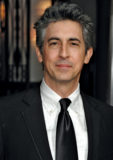
 The Descendants, screenplay by Alexander Payne, Nat Faxon, Jim Rash, based on the novel by Kaui Hart Hemmings – Honolulu-based attorney Matt King has just learned that his wife will never awaken from her coma and that she will soon die. In addition to dealing with the loss of his wife, he must also find a way to address this issue with his two daughters, 10-year old Scottie and 17-year-old Alex. And as King must deal with this tragedy, he is also the main decision-maker in determining whether his family sells a highly-coveted property to a local developer. In the midst of dealing with all of this, he also learns that his wife was cheating on him before she fell into a coma. Needless to say, the story could have been extremely difficult to endure. Yet the screenwriters find a way to not only make it watchable but to also make it funny. The film provides humorous breaks from the heavy issues that are interwoven throughout the film. And by finding that tone, The Descendants picks up on the fact that even our most tragic times can be filled with absurd moments.– gc
The Descendants, screenplay by Alexander Payne, Nat Faxon, Jim Rash, based on the novel by Kaui Hart Hemmings – Honolulu-based attorney Matt King has just learned that his wife will never awaken from her coma and that she will soon die. In addition to dealing with the loss of his wife, he must also find a way to address this issue with his two daughters, 10-year old Scottie and 17-year-old Alex. And as King must deal with this tragedy, he is also the main decision-maker in determining whether his family sells a highly-coveted property to a local developer. In the midst of dealing with all of this, he also learns that his wife was cheating on him before she fell into a coma. Needless to say, the story could have been extremely difficult to endure. Yet the screenwriters find a way to not only make it watchable but to also make it funny. The film provides humorous breaks from the heavy issues that are interwoven throughout the film. And by finding that tone, The Descendants picks up on the fact that even our most tragic times can be filled with absurd moments.– gc
 The Hedgehog, screenplay by Mona Achache, based on the novel by Muriel Barbery – Muriel Barbery’s novel The Elegance of the Hedgehog captured the friendship of two outcasts, Paloma, the young, precocious daughter in a wealthy family who has decided to end her life on her 13th birthday, and Renée Michel, a concierge at an upscale hotel who hides her intelligence and refinement behind a gruff exterior. Achache’s script ‘elegantly’ captures the soul of the novel and distills it into a moving film, while cleverly managing to retain the philosophical musings of Paloma’s diary, and the quiet solitude of Renée’s existence. — mrc
The Hedgehog, screenplay by Mona Achache, based on the novel by Muriel Barbery – Muriel Barbery’s novel The Elegance of the Hedgehog captured the friendship of two outcasts, Paloma, the young, precocious daughter in a wealthy family who has decided to end her life on her 13th birthday, and Renée Michel, a concierge at an upscale hotel who hides her intelligence and refinement behind a gruff exterior. Achache’s script ‘elegantly’ captures the soul of the novel and distills it into a moving film, while cleverly managing to retain the philosophical musings of Paloma’s diary, and the quiet solitude of Renée’s existence. — mrc

 Higher Ground, screenplay by Carolyn S. Briggs and Tim Metcalfe, based on the memoir by Carolyn S. Briggs – We celebrate independent film because it can tell the nuanced story of characters which, in Hollywood’s hands, are demonized, of one dimension, or mere caricature. Higher Ground, based on co-writer Carolyn Briggs’s memoir, tells a story of faith tested and finally lost. The Christians it portrays are fully rendered, at once kind, sincere, devoted, even sensual, but still fully flawed human beings. Despite the story’s arc, we feel the screenwriters’ deep respect for these people, so that we know perfectly well why this woman, in the end, envies the strength of their faith even as it fails her. This intelligent screenplay extends our understanding of humanity and the universality of its experience. — jp
Higher Ground, screenplay by Carolyn S. Briggs and Tim Metcalfe, based on the memoir by Carolyn S. Briggs – We celebrate independent film because it can tell the nuanced story of characters which, in Hollywood’s hands, are demonized, of one dimension, or mere caricature. Higher Ground, based on co-writer Carolyn Briggs’s memoir, tells a story of faith tested and finally lost. The Christians it portrays are fully rendered, at once kind, sincere, devoted, even sensual, but still fully flawed human beings. Despite the story’s arc, we feel the screenwriters’ deep respect for these people, so that we know perfectly well why this woman, in the end, envies the strength of their faith even as it fails her. This intelligent screenplay extends our understanding of humanity and the universality of its experience. — jp
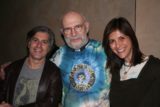 The Music Never Stopped, screenplay by Gwyn Lurie and Gary Marks based on the essay by Oliver Sacks – I’m a sucker for music. When music is woven into the fabric of a great story, so much the better. The screenplay for The Music Never Stopped by Gwen Lurie and Gary Marks, adapted from the essay ‘The Last Hippie’ by Oliver Sacks, meshes words and music to tell the story of a father and son, long estranged, who are able to connect again after 20 years through their mutual love of music. Highlighting the music of the 1960s and of the Grateful Dead in particular, the story is a voyage through confusion to enlightenment, and through music, family, and love. — kb
The Music Never Stopped, screenplay by Gwyn Lurie and Gary Marks based on the essay by Oliver Sacks – I’m a sucker for music. When music is woven into the fabric of a great story, so much the better. The screenplay for The Music Never Stopped by Gwen Lurie and Gary Marks, adapted from the essay ‘The Last Hippie’ by Oliver Sacks, meshes words and music to tell the story of a father and son, long estranged, who are able to connect again after 20 years through their mutual love of music. Highlighting the music of the 1960s and of the Grateful Dead in particular, the story is a voyage through confusion to enlightenment, and through music, family, and love. — kb
 Submarine, screenplay by Richard Ayoade based on the novel by Joe Dunthorne – In Submarine, Oliver Tate (Craig Roberts), a quirky 15-year old misfit relies on his inventive interior world to cope with being stuck in a small seaside town in Wales and to woo the beguiling yet equally unusual Jordana (Yasmin Page). With briskly-edited fantasy sequences, an airy, evocative score (by Alex Turner of the Arctic Monkeys) and a supporting ensemble of eccentrics (including Paddy Considine as a mulleted new-age guru), you’d be forgiven for immediately comparing Richard Ayoade’s feature film debut to Rushmore. Fortunately, using Joe Dunthorne’s novel as a jumping-off point, Ayoade molds these raw materials into something like a modern-day Harold and Maude with a keen sense of place and an outcome that feels completely earned. — ck
Submarine, screenplay by Richard Ayoade based on the novel by Joe Dunthorne – In Submarine, Oliver Tate (Craig Roberts), a quirky 15-year old misfit relies on his inventive interior world to cope with being stuck in a small seaside town in Wales and to woo the beguiling yet equally unusual Jordana (Yasmin Page). With briskly-edited fantasy sequences, an airy, evocative score (by Alex Turner of the Arctic Monkeys) and a supporting ensemble of eccentrics (including Paddy Considine as a mulleted new-age guru), you’d be forgiven for immediately comparing Richard Ayoade’s feature film debut to Rushmore. Fortunately, using Joe Dunthorne’s novel as a jumping-off point, Ayoade molds these raw materials into something like a modern-day Harold and Maude with a keen sense of place and an outcome that feels completely earned. — ck
Best Cinematography

 Guillaume Schiffman for The Artist – Cinematographer Guillaume Schiffman (OSS117 films, Gainsbourg: A Heroic Life, Anatomy of Hell) uses the contrast of black and white to dazzling effect for a film that focuses on dichotomy: silent films vs. talking pictures; a rising star and a falling idol; and a gentle sparring between the sexes. Schiffman’s skill furthers the argument that black and white is preferable for certain subjects or moods. — bk
Guillaume Schiffman for The Artist – Cinematographer Guillaume Schiffman (OSS117 films, Gainsbourg: A Heroic Life, Anatomy of Hell) uses the contrast of black and white to dazzling effect for a film that focuses on dichotomy: silent films vs. talking pictures; a rising star and a falling idol; and a gentle sparring between the sexes. Schiffman’s skill furthers the argument that black and white is preferable for certain subjects or moods. — bk
 Nobuyasu Kita for 13 Assassins – Kita provides a view both grand and grim into the decaying Shogun/feudal system of mid-19th century Japan. In the first section of the film, Nobuyasu films interiors as horizontal and vertical closed lines and confined spaces colored with a neutral palette, and relying frequently on a chiaroscuro effect for still, calm portraits of the heroes. The second section begins with shots from high above the mountains, then plunge the audience into deep green forests and along rushing streams where the warriors race to overtake their adversaries and set up ambush. Nobuyasu uses many long wide shots, filling the screen with dreamy landscapes alternated against ghostly effects of an overlord’s army marching silently out of fog. The final epic battle scene is a master work of focus amidst chaos, poetry in brutal motion. Nobuyasu’s cameras seem to leap, thrust and spin with the fighters, yet in each individual shot the lens is fixed and steady. — kp
Nobuyasu Kita for 13 Assassins – Kita provides a view both grand and grim into the decaying Shogun/feudal system of mid-19th century Japan. In the first section of the film, Nobuyasu films interiors as horizontal and vertical closed lines and confined spaces colored with a neutral palette, and relying frequently on a chiaroscuro effect for still, calm portraits of the heroes. The second section begins with shots from high above the mountains, then plunge the audience into deep green forests and along rushing streams where the warriors race to overtake their adversaries and set up ambush. Nobuyasu uses many long wide shots, filling the screen with dreamy landscapes alternated against ghostly effects of an overlord’s army marching silently out of fog. The final epic battle scene is a master work of focus amidst chaos, poetry in brutal motion. Nobuyasu’s cameras seem to leap, thrust and spin with the fighters, yet in each individual shot the lens is fixed and steady. — kp
 Joel Hodge for Bellflower – Director Evan Glodell concocted a steampunk style camera from collected parts–half digital, half bellows vintage–for the unique look of BELLFLOWER. DP Joel Hodges masters the use of it, infusing this story of two nihilistic young men with an air of menace. Both road trip romance and Mad Max-style explosions are subjected to the filmmakers’ surreal aesthetic. The movie was made on $17,000–you’ve got to know that’s a labor of love. — djy
Joel Hodge for Bellflower – Director Evan Glodell concocted a steampunk style camera from collected parts–half digital, half bellows vintage–for the unique look of BELLFLOWER. DP Joel Hodges masters the use of it, infusing this story of two nihilistic young men with an air of menace. Both road trip romance and Mad Max-style explosions are subjected to the filmmakers’ surreal aesthetic. The movie was made on $17,000–you’ve got to know that’s a labor of love. — djy
 Peter Zeitlinger for Cave of Forgotten Dreams – Werner Herzog and his longtime cinematographer, Peter Zeitlinger, make stunning use of 3D technology in this documentary about the Chauvet caves of Southern France. The site of the oldest known pictorial creations of humankind, the caves are carefully guarded from damage. Access is rare, and tightly controlled. Yet despite physical and lighting restrictions, or perhaps because of them, Herzog & Zeitlinger frame and portray primitive images and space as timeless and profound cries of the soul. — bcu
Peter Zeitlinger for Cave of Forgotten Dreams – Werner Herzog and his longtime cinematographer, Peter Zeitlinger, make stunning use of 3D technology in this documentary about the Chauvet caves of Southern France. The site of the oldest known pictorial creations of humankind, the caves are carefully guarded from damage. Access is rare, and tightly controlled. Yet despite physical and lighting restrictions, or perhaps because of them, Herzog & Zeitlinger frame and portray primitive images and space as timeless and profound cries of the soul. — bcu
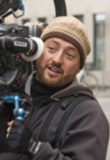 Manuel Alberto Claro for Melancholia – The lush scenery and the wedding scene are beautifully photographed by Manuel Alberto Claro but it is the integration of the special effects that transforms the film into something both ominous and ethereal. This is the work of a cinematographic master. — bk
Manuel Alberto Claro for Melancholia – The lush scenery and the wedding scene are beautifully photographed by Manuel Alberto Claro but it is the integration of the special effects that transforms the film into something both ominous and ethereal. This is the work of a cinematographic master. — bk
 Emmanuel Lubezki for The Tree of Life – Emmanuel Lubezki’s camerawork on The Tree of Life is miraculously pristine, like a collection of glowing memories recollected as clearly as the moments they happened as your childhood eyes saw them. Fleeting moments of grace are caught in the blue sunny skies and the dew-kissed grass and in Jessica Chastain’s silky ginger hair by Lubezki’s handheld camera to compose the beautiful mosaic of Malick’s tonal poem juxtaposing the intimate scale of suburban family life to the grandeur of the entire universe at large. Single shots from the film can be hung up on a wall and still be vivid and lively enough to stare into its depths of meaning and consider the emotional reactions they spark, immediately evoking the very scenes in motion from which they belong. — is
Emmanuel Lubezki for The Tree of Life – Emmanuel Lubezki’s camerawork on The Tree of Life is miraculously pristine, like a collection of glowing memories recollected as clearly as the moments they happened as your childhood eyes saw them. Fleeting moments of grace are caught in the blue sunny skies and the dew-kissed grass and in Jessica Chastain’s silky ginger hair by Lubezki’s handheld camera to compose the beautiful mosaic of Malick’s tonal poem juxtaposing the intimate scale of suburban family life to the grandeur of the entire universe at large. Single shots from the film can be hung up on a wall and still be vivid and lively enough to stare into its depths of meaning and consider the emotional reactions they spark, immediately evoking the very scenes in motion from which they belong. — is
 Sayombhu Mukdeeprom for Uncle Boonmee Who Can Recall His Past Lives – Like any Apichatpong Weerasethakul film, this one has a visually ravishing tableau. First, we’re drawn into a dark, wooded milieu where one character gradually apparates into the scene before our very eyes. In complete contrast, we later travel to a bright, open yet haunted space where the titular character makes his final pilgrimage. In between, we meet the “monkey ghost” figure, a hairy, unknowable creature with tiny glowing red eyes that could have stepped out of a B-grade 1970s horror flick. All of these images linger in the mind because they reveal a strange new world to us—one we acclimate to so effortlessly that at the conclusion, even a karaoke bar seems completely normal as it subtly buzzes with unearthly optical illusions. — ck
Sayombhu Mukdeeprom for Uncle Boonmee Who Can Recall His Past Lives – Like any Apichatpong Weerasethakul film, this one has a visually ravishing tableau. First, we’re drawn into a dark, wooded milieu where one character gradually apparates into the scene before our very eyes. In complete contrast, we later travel to a bright, open yet haunted space where the titular character makes his final pilgrimage. In between, we meet the “monkey ghost” figure, a hairy, unknowable creature with tiny glowing red eyes that could have stepped out of a B-grade 1970s horror flick. All of these images linger in the mind because they reveal a strange new world to us—one we acclimate to so effortlessly that at the conclusion, even a karaoke bar seems completely normal as it subtly buzzes with unearthly optical illusions. — ck
Best Production Design

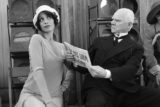 Laurence Bennett for The Artist – The true nostalgic brilliance apparent in The Artist’s appearance is that it doesn’t just take place in the actual world of the 1920s and 30s, but in the world of a 1920s and 30s film itself. Obviously the aesthetic is matched in the black and white but also as precisely as in its traditional 1.33:1 aspect ratio, which helps to make its specific theatrical experience uniquely unforgettable in this time and day. The sets, though true to its time period are less the sets of a specific period piece than they are the set pieces of an actual film from that era. It’s not about film in the 1920s and 30s, it is a film from the 1920s and 30s, about the very topic of film itself. The look and design of The Artist allows the film more layers in which to embed and invoke the spirit of old Hollywood as a true love letter to it in every sense of the phrase. — is
Laurence Bennett for The Artist – The true nostalgic brilliance apparent in The Artist’s appearance is that it doesn’t just take place in the actual world of the 1920s and 30s, but in the world of a 1920s and 30s film itself. Obviously the aesthetic is matched in the black and white but also as precisely as in its traditional 1.33:1 aspect ratio, which helps to make its specific theatrical experience uniquely unforgettable in this time and day. The sets, though true to its time period are less the sets of a specific period piece than they are the set pieces of an actual film from that era. It’s not about film in the 1920s and 30s, it is a film from the 1920s and 30s, about the very topic of film itself. The look and design of The Artist allows the film more layers in which to embed and invoke the spirit of old Hollywood as a true love letter to it in every sense of the phrase. — is
 Yuji Hayashida for 13 Assassins – This epic of feudal Japan begins amidst the ethereal splendor of an Imperial palace and descends to the filth in which the villain meets his end. No matter where you choose to look or what you choose to examine as the movie unreels, armor, weapons, tack, houses, farms, clothing, even that outhouse in the final scene, all (except for one trademark Takashi Miike outré flourish) are prepared with obsessive attention to accuracy in period and detail. If the purpose of a production’s design is to draw the movie’s viewers to a time and place, to transport them, to make them participants in the action, well then this production succeeds on any and every count. — jp
Yuji Hayashida for 13 Assassins – This epic of feudal Japan begins amidst the ethereal splendor of an Imperial palace and descends to the filth in which the villain meets his end. No matter where you choose to look or what you choose to examine as the movie unreels, armor, weapons, tack, houses, farms, clothing, even that outhouse in the final scene, all (except for one trademark Takashi Miike outré flourish) are prepared with obsessive attention to accuracy in period and detail. If the purpose of a production’s design is to draw the movie’s viewers to a time and place, to transport them, to make them participants in the action, well then this production succeeds on any and every count. — jp
 Jacques Arhex for The Illusionist – The production design on the animated feature film, The Illusionist, plays a major role in the story, which takes you back to 1960s Paris. It very cleverly illustrates the displacement of the characters through its transition from the vibrant look of vaudeville days to a more modern look as that form of entertainment fades away. From the theaters and halls the players performed in, to the hotels, cafes and boutiques the characters frequent, the colors and spark come and go. The animated sets of the time period act as a character similar to a ghost of what had existed. This era concludes with a final bleak journey to the cold, snowy, and lonely mountains in Edinburgh. The Illusionist is a memorable homage to the final stage of Jacques Tati’s career from which the screenplay was based. — tp
Jacques Arhex for The Illusionist – The production design on the animated feature film, The Illusionist, plays a major role in the story, which takes you back to 1960s Paris. It very cleverly illustrates the displacement of the characters through its transition from the vibrant look of vaudeville days to a more modern look as that form of entertainment fades away. From the theaters and halls the players performed in, to the hotels, cafes and boutiques the characters frequent, the colors and spark come and go. The animated sets of the time period act as a character similar to a ghost of what had existed. This era concludes with a final bleak journey to the cold, snowy, and lonely mountains in Edinburgh. The Illusionist is a memorable homage to the final stage of Jacques Tati’s career from which the screenplay was based. — tp
 Eduardo Hidalgo hijo for The Last Circus – The production design in the The Last Circus takes you through the Spanish Civil War during 1937 to the end of the Franco regime in 1973, surrounding the life, struggle, and eventually horror around a sad clown. The director and designer appear to be inspired by the film Freaks in the look of the circus surroundings and following the sad clown’s eventual demise, pairing well with the vivid costumes and eerie score. The production design also adds a wild palette of bright colors throughout the film and circus artifacts that make the scenes both beautiful and horrifying at the same time. — tp
Eduardo Hidalgo hijo for The Last Circus – The production design in the The Last Circus takes you through the Spanish Civil War during 1937 to the end of the Franco regime in 1973, surrounding the life, struggle, and eventually horror around a sad clown. The director and designer appear to be inspired by the film Freaks in the look of the circus surroundings and following the sad clown’s eventual demise, pairing well with the vivid costumes and eerie score. The production design also adds a wild palette of bright colors throughout the film and circus artifacts that make the scenes both beautiful and horrifying at the same time. — tp
 Jette Lehmann for Melancholia – Although there are fine performances in this film, often the hallmark of Dogme films such as those Lars von Trier has presided over in the past, the director’s increasing interest in creating visually-arresting films culminates in this stunningly-conceived work. Ranging from intricate and voluptuous tableaux to nearly-careless-seeming throwaway scenes filmed in grainy hand-held ultra-realism, the production design by Jette Lehman (who also worked with von Trier on the television series The Kingdom) is often confounding as it moves from poetic to prosaic and back again. Photographed by Manuel Alberto Claro, Melancholia is visual feast or famine, but always intriguing and unexpected. — pa
Jette Lehmann for Melancholia – Although there are fine performances in this film, often the hallmark of Dogme films such as those Lars von Trier has presided over in the past, the director’s increasing interest in creating visually-arresting films culminates in this stunningly-conceived work. Ranging from intricate and voluptuous tableaux to nearly-careless-seeming throwaway scenes filmed in grainy hand-held ultra-realism, the production design by Jette Lehman (who also worked with von Trier on the television series The Kingdom) is often confounding as it moves from poetic to prosaic and back again. Photographed by Manuel Alberto Claro, Melancholia is visual feast or famine, but always intriguing and unexpected. — pa
 Anne Seibel for Midnight in Paris – Director Woody Allen, along with Production Designer, Anne Seibel and cinematographer, Darius Kondji, worked together to contrast the City of Lights contemporary feel while recreating several period looks in Midnight in Paris. Seibel opens the film with a nod to Allen’s Manhattan: there are postcard montage images of iconic Paris monuments, streets and cafes washed in the light of that city’s special sun; and streets shining from the romantic falling rain. The charm of this film is that it is set in several time periods. We move form the posh hotel suites and restaurants of Paris today, to the Salon of Gertrude Stein and bistros filled with Hemingway, Fitzgerald and Bunuel; with a special treat in a scene recreated at the Moulin Rouge with Lautrec, Gauguin and Degas. Seibel uses brighter colors for the contemporary period and changes the palette to soft browns, beiges and oranges for the older period scenes. — di
Anne Seibel for Midnight in Paris – Director Woody Allen, along with Production Designer, Anne Seibel and cinematographer, Darius Kondji, worked together to contrast the City of Lights contemporary feel while recreating several period looks in Midnight in Paris. Seibel opens the film with a nod to Allen’s Manhattan: there are postcard montage images of iconic Paris monuments, streets and cafes washed in the light of that city’s special sun; and streets shining from the romantic falling rain. The charm of this film is that it is set in several time periods. We move form the posh hotel suites and restaurants of Paris today, to the Salon of Gertrude Stein and bistros filled with Hemingway, Fitzgerald and Bunuel; with a special treat in a scene recreated at the Moulin Rouge with Lautrec, Gauguin and Degas. Seibel uses brighter colors for the contemporary period and changes the palette to soft browns, beiges and oranges for the older period scenes. — di
Best Performance by an Ensemble Cast
It’s a Tie!

 Another Year – The friends, family, and clients of Tom and Gerri help explore the nature of happiness, and how the consequences of choices made effect their lives. As expected, this Mike Leigh film is perfectly cast. Even the actors playing the most unsympathetic, depressing characters arouse our compassion through their compelling performances. — sb
Another Year – The friends, family, and clients of Tom and Gerri help explore the nature of happiness, and how the consequences of choices made effect their lives. As expected, this Mike Leigh film is perfectly cast. Even the actors playing the most unsympathetic, depressing characters arouse our compassion through their compelling performances. — sb

 A Separation – It’s difficult to write a story, much less act a part in a film where each decision any character makes seems to lead to a further unraveling of the lives of those involved. As we watch the handful of characters in A Separationmake these decisions, we know things are going to get worse and worse, but we are right there with them, knowing we would most likely make the same decision. From seasoned actors Peyman Maadi, Leila Hatami and this year’s nominee for Best Supporting Actor, Shahab Hosseini, to first-timers such as Sareh Bayat and the director’s daughter, Sarina Farhadi, A Separation succeeds in large part because we believe in the integrity and convictions, however misguided, of every character on the screen. Strong writing, assured direction and powerful acting come together beautifully in A Separation. — mrc
A Separation – It’s difficult to write a story, much less act a part in a film where each decision any character makes seems to lead to a further unraveling of the lives of those involved. As we watch the handful of characters in A Separationmake these decisions, we know things are going to get worse and worse, but we are right there with them, knowing we would most likely make the same decision. From seasoned actors Peyman Maadi, Leila Hatami and this year’s nominee for Best Supporting Actor, Shahab Hosseini, to first-timers such as Sareh Bayat and the director’s daughter, Sarina Farhadi, A Separation succeeds in large part because we believe in the integrity and convictions, however misguided, of every character on the screen. Strong writing, assured direction and powerful acting come together beautifully in A Separation. — mrc
 The Artist – Michel Hazanavicius’s direction allows the cast to shine and work flawlessly together. Jean Dujardin, the most popular and talented comedian in France today, and coming off the top acting award at Cannes last year, leads the cast. His acting is perfect, with a face that says it all: drawn with classic features, a thin traced moustache, and a dazzling smile. You can truly under stand Norman Desmond in Sunset Boulevard when she says. ‘We didn’t need dialogs, we had faces.” His co-star, Berenice Bejo, plays her part with an optimistic attitude as a young aspiring dancer about to have a meteoric rise to the top. John Goodman, the dynamic and loving studio head, is a pleasure to watch; as is James Cromwell, Desjardin’s faithful aide and friend. And there is that dog…well you will just have to watch the film to see this acting sensation. — di
The Artist – Michel Hazanavicius’s direction allows the cast to shine and work flawlessly together. Jean Dujardin, the most popular and talented comedian in France today, and coming off the top acting award at Cannes last year, leads the cast. His acting is perfect, with a face that says it all: drawn with classic features, a thin traced moustache, and a dazzling smile. You can truly under stand Norman Desmond in Sunset Boulevard when she says. ‘We didn’t need dialogs, we had faces.” His co-star, Berenice Bejo, plays her part with an optimistic attitude as a young aspiring dancer about to have a meteoric rise to the top. John Goodman, the dynamic and loving studio head, is a pleasure to watch; as is James Cromwell, Desjardin’s faithful aide and friend. And there is that dog…well you will just have to watch the film to see this acting sensation. — di
 Margin Call – Margin Call is one of this year’s filmmaking triumphs. In order to accomplish this, it needed a great script as well as a cast that could deliver the lines and elevate the tension of the film. In depicting an environment where profit dictates all, filmmaker JC Chandor introduces us to characters whose souls are either in turmoil or were abandoned a long time ago. From Stanley Tucci’s laid-off stockbroker to rising hotshots Zachary Quinto and Penn Badgley to financially successful but morally compromised Paul Bettany to financial overlord Jeremy Irons, the cast plays beautifully off one another. And, providing the weight of the film, Kevin Spacey plays a manager who recognizes what is about to happen and who has reached his limit for what he is willing to sacrifice for the firm to which he has dedicated his life. In short, the performances of Margin Call are not to be missed. — gc
Margin Call – Margin Call is one of this year’s filmmaking triumphs. In order to accomplish this, it needed a great script as well as a cast that could deliver the lines and elevate the tension of the film. In depicting an environment where profit dictates all, filmmaker JC Chandor introduces us to characters whose souls are either in turmoil or were abandoned a long time ago. From Stanley Tucci’s laid-off stockbroker to rising hotshots Zachary Quinto and Penn Badgley to financially successful but morally compromised Paul Bettany to financial overlord Jeremy Irons, the cast plays beautifully off one another. And, providing the weight of the film, Kevin Spacey plays a manager who recognizes what is about to happen and who has reached his limit for what he is willing to sacrifice for the firm to which he has dedicated his life. In short, the performances of Margin Call are not to be missed. — gc
 Midnight in Paris – In almost any Woody Allen movie the cast is impressive yet often underutilized. Not so in Midnight in Paris, an imaginative romp that allows almost all the members of the large cast to strut their stuff. Together they engage, entertain and complement one another with superb timing. — bk
Midnight in Paris – In almost any Woody Allen movie the cast is impressive yet often underutilized. Not so in Midnight in Paris, an imaginative romp that allows almost all the members of the large cast to strut their stuff. Together they engage, entertain and complement one another with superb timing. — bk
 Tinker Tailor Soldier Spy – If Gary Oldman anchors this John le Carre adaptation with his reserved and owlish but delicately perceptive take on intelligence agent George Smiley, he has ample support from the most impressive British ensemble outside of a Harry Potter film: Colin Firth at his caddish best, a chameleonic-as-ever Tom Hardy, a perfectly craggy and authoritative John Hurt, and good work Kathy Burke (featured in just one scene but unforgettable), Benedict Cumberbatch (boyish and loyal yet secretly tormented), and Mark Strong (testy yet utterly wounded by betrayal). In fact, everyone involved in this project seems devoted in bringing their best to it—a degree of passion and attention you wish all like-minded, “prestige” pictures would take note of. — ck
Tinker Tailor Soldier Spy – If Gary Oldman anchors this John le Carre adaptation with his reserved and owlish but delicately perceptive take on intelligence agent George Smiley, he has ample support from the most impressive British ensemble outside of a Harry Potter film: Colin Firth at his caddish best, a chameleonic-as-ever Tom Hardy, a perfectly craggy and authoritative John Hurt, and good work Kathy Burke (featured in just one scene but unforgettable), Benedict Cumberbatch (boyish and loyal yet secretly tormented), and Mark Strong (testy yet utterly wounded by betrayal). In fact, everyone involved in this project seems devoted in bringing their best to it—a degree of passion and attention you wish all like-minded, “prestige” pictures would take note of. — ck
Best Documentary
It’s a Tie!

 Bill Cunningham New York – ike all good documentaries about art, this is a film filled with images of the artist’s work. We are able to view frame after frame of beautifully captured candid shots of people in the streets of New York City. The documentary is excellent on many levels, but especially worth noting is how the director captures the intriguing nature and personality of its subject. We get a chance to become familiar with the man behind the camera, and we learn that he is a living icon and an enigma. He believes fashion is an essential element of a gratifying life, yet he wears the same clothes every day, doing his own clothing alterations and repairs with strapping tape. This documentary gives us a chance to celebrate individual expression, aesthetic beauty, and raises awareness of the way in which New York’s corporate greed has managed to injure, wound, and all but destroy the local art community. — bca
Bill Cunningham New York – ike all good documentaries about art, this is a film filled with images of the artist’s work. We are able to view frame after frame of beautifully captured candid shots of people in the streets of New York City. The documentary is excellent on many levels, but especially worth noting is how the director captures the intriguing nature and personality of its subject. We get a chance to become familiar with the man behind the camera, and we learn that he is a living icon and an enigma. He believes fashion is an essential element of a gratifying life, yet he wears the same clothes every day, doing his own clothing alterations and repairs with strapping tape. This documentary gives us a chance to celebrate individual expression, aesthetic beauty, and raises awareness of the way in which New York’s corporate greed has managed to injure, wound, and all but destroy the local art community. — bca

 Buck – This is Director Cindy Meehl first documentary, and she is off to a good start. Buck is the inspirational story about Buck Brannaman, a ‘horse whisperer.’ Robert Redford based part of his film, The Horse Whisperer, on Buck’s life; and used Buck as a technical advisor in the production. Buck has an interesting back-story in that he recovered from years of child abuse to become a well-known expert in the interaction between horses and people. He is truly what you would imagine to be the ideal cowboy with his approach to his craft and down home humbleness, with a delightful corny sense of humor. The documentary teaches us that often he is just helping the horse with people problems. You are truly inspired by his story. The commentator and critic David Ferguson best sums it up: “ His cowboy philosophy is pretty simple. Everyone carries some baggage, and we can all make our own choices on whether to let that affect our value and enjoyment of life.” — di
Buck – This is Director Cindy Meehl first documentary, and she is off to a good start. Buck is the inspirational story about Buck Brannaman, a ‘horse whisperer.’ Robert Redford based part of his film, The Horse Whisperer, on Buck’s life; and used Buck as a technical advisor in the production. Buck has an interesting back-story in that he recovered from years of child abuse to become a well-known expert in the interaction between horses and people. He is truly what you would imagine to be the ideal cowboy with his approach to his craft and down home humbleness, with a delightful corny sense of humor. The documentary teaches us that often he is just helping the horse with people problems. You are truly inspired by his story. The commentator and critic David Ferguson best sums it up: “ His cowboy philosophy is pretty simple. Everyone carries some baggage, and we can all make our own choices on whether to let that affect our value and enjoyment of life.” — di
 Into the Abyss – What is most fascinating about Werner Herzog’s latest documentary, Into the Abyss, is that while we never really find what happened in the death row case for Michael Perry’s crime of murder, we learn about the people it has affected. We see the case from the eyes of the potential murderers in prison but see them as human and wonder if the system was right or not. The film explores multiple perspectives including victims’families, those involved in preparing inmates for death, those who fall in love with men in prison. While you can tell that Herzog has some bias against the death penalty personally, he explores layers and pieces of the puzzle of the case objectively and lets the viewer be the judge. As per usual, Herzog is able to still put humor in odd places considering the films’ subject to again to show a little light in all of the darkness. — tp
Into the Abyss – What is most fascinating about Werner Herzog’s latest documentary, Into the Abyss, is that while we never really find what happened in the death row case for Michael Perry’s crime of murder, we learn about the people it has affected. We see the case from the eyes of the potential murderers in prison but see them as human and wonder if the system was right or not. The film explores multiple perspectives including victims’families, those involved in preparing inmates for death, those who fall in love with men in prison. While you can tell that Herzog has some bias against the death penalty personally, he explores layers and pieces of the puzzle of the case objectively and lets the viewer be the judge. As per usual, Herzog is able to still put humor in odd places considering the films’ subject to again to show a little light in all of the darkness. — tp
 Pina – Directed by Wim Wenders, Pina is decidedly celebratory of the life and work of late German choreographer, Pina Bausch. Bausch died during the making of the documentary, at which point Wenders chose to end the project. However, after numerous appeals, Wenders decided to go ahead and begin filming dance segments without her. Despite her physical absence, her presence was very real throughout these performances. The cinematography is intentionally inclusive, opting for full-angle camera shots that capture every body on the stage. The choice of performances and cuts made by the film maker are wholly revealing, and Wenders manages to thrill the audience with various free falls and frightening moves accomplished by Pina’s dancers. The documentary is gratefully light on commentary and information about who this woman was outside of the studio, a choice that allows us to see her as she truly was. That is, we see Pina as a real genius, beautifully creative, and wholly engulfed in her work. — bca
Pina – Directed by Wim Wenders, Pina is decidedly celebratory of the life and work of late German choreographer, Pina Bausch. Bausch died during the making of the documentary, at which point Wenders chose to end the project. However, after numerous appeals, Wenders decided to go ahead and begin filming dance segments without her. Despite her physical absence, her presence was very real throughout these performances. The cinematography is intentionally inclusive, opting for full-angle camera shots that capture every body on the stage. The choice of performances and cuts made by the film maker are wholly revealing, and Wenders manages to thrill the audience with various free falls and frightening moves accomplished by Pina’s dancers. The documentary is gratefully light on commentary and information about who this woman was outside of the studio, a choice that allows us to see her as she truly was. That is, we see Pina as a real genius, beautifully creative, and wholly engulfed in her work. — bca
 Senna – Even if you know nothing about racing, you are sure to be moved by this fast paced, absorbing documentary about the life of Brazilian Formula One race car champion, Ayrton Senna. The film follows Senna’s life as he rises from cart to race car racing in a short time. A fierce, but temperamental competitor, Senna meets his match in French Formula One champion, Alain Prost. It is their ongoing feud that provides this powerful documentary with its dramatic tension as it moves toward its ultimately tragic conclusion. — vo
Senna – Even if you know nothing about racing, you are sure to be moved by this fast paced, absorbing documentary about the life of Brazilian Formula One race car champion, Ayrton Senna. The film follows Senna’s life as he rises from cart to race car racing in a short time. A fierce, but temperamental competitor, Senna meets his match in French Formula One champion, Alain Prost. It is their ongoing feud that provides this powerful documentary with its dramatic tension as it moves toward its ultimately tragic conclusion. — vo
 Topp Twins: Untouchable Girls – Leanne Pooley, from New Zealand, presents a touching documentary about the lesbian, yodeling comedian folk singers, The Topp Twins, Jools and Linda Topp. The film features footage from the early ’80’s of the girls’ busking for money as street singers and their involvement in political movements over the years. It also captures live performances of the duo along with their comedic personas that many of the common country folks know the duo as their characters instead of being musicians. I found that side of the duo fascinating, along with interviews of them as these zany characters throughout the film and coverage of later personal struggles the two went through. The documentary opens the eyes of the audience to another side of New Zealand’s culture of every day folks and the musical world and life of the Topp Twins who are like their song, “Untouchable Girls”. — tp
Topp Twins: Untouchable Girls – Leanne Pooley, from New Zealand, presents a touching documentary about the lesbian, yodeling comedian folk singers, The Topp Twins, Jools and Linda Topp. The film features footage from the early ’80’s of the girls’ busking for money as street singers and their involvement in political movements over the years. It also captures live performances of the duo along with their comedic personas that many of the common country folks know the duo as their characters instead of being musicians. I found that side of the duo fascinating, along with interviews of them as these zany characters throughout the film and coverage of later personal struggles the two went through. The documentary opens the eyes of the audience to another side of New Zealand’s culture of every day folks and the musical world and life of the Topp Twins who are like their song, “Untouchable Girls”. — tp
